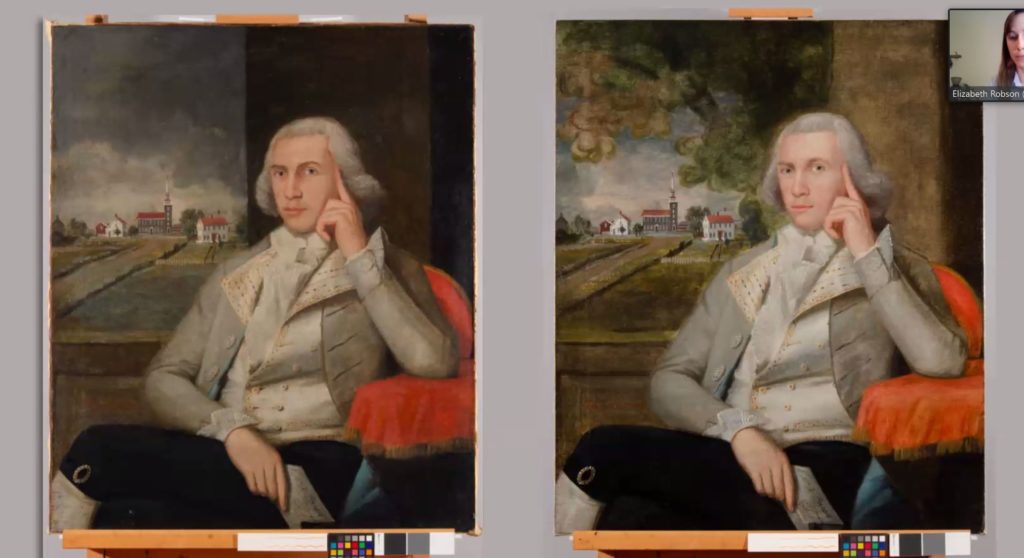3-Ring Circus virtual meeting summary (January 6, 2022)
Ring 1: Conservation in Practice
Treatment of the Portrait of William Henry Capers by Ralph Earl: When “Less is More” Still Takes Time
Presented by Elizabeth Robson, 2019-2021 Paintings Conservation Fellow at Colonial Williamsburg

The painting appeared to have a certain amount of overpainting on original examination, but only as the overpaint was removed did it become clear how much was there. The background had been almost entirely repainted, including the complete elimination of a large tree.
The tree had significant damage, but by traveling to examine 47 paintings by Earl in 9 locations, Robson was able to understand the method he used to paint trees in order to inpaint the losses.
The lining was non-standard, with a paper interleaf. Results from the FTIR analysis determined that the lining adhesive was neoprene or polychloroprene (a material noted by its manufacturers for getting stronger over time). The adhesive was removed with a custom-shaped heated spatula, a hexane-isopropanol solvent mixture, and mechanical action.
The edge relining was performed with Stabilitex, linen, and BEVA 371b. A custom period-appropriate frame was constructed by Colonial Williamsburg wooden artifacts conservators based on examples of original frames on other Earl paintings.
The treatment took over 700 hours, including 200 hours of removing overpaint and 150 hours removing the lining.
Summary by: Jon Sweitzer-Lamme
Meeting attendance: 83 participants